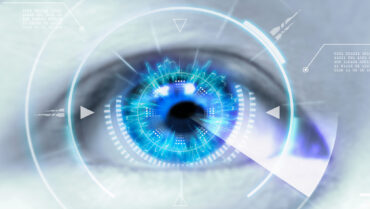A Residency Program Director’s Perspective
Jeff Pettey, MD, MBA

When program directors sign off that a resident has completed training, they attest that the newly minted ophthalmologist is prepared to care for patients safely without supervision. In the United States, this means the ophthalmologist can safely perform cataract surgery specifically. The signature also denotes that the trainee has a level of competence in evaluating and implementing new technologies.
AT A GLANCE
- Laser cataract surgery can offer benefits over traditional phaco cataract surgery such as improved capsulotomy consistency, centration, and shape and simplified nuclear segmentation and removal for early-career surgeons.
- Laser technology should be incorporated into resident education without negatively affecting a resident’s ability to perform traditional manual techniques safely.
- Laser cataract surgery can help trainees and young surgeons reduce residual refractive error, enhance surgical outcomes, and boost their confidence in implementing advanced technology IOLs.
BENEFITS and limitations
Benefits of laser technology for early-career surgeons. I embrace new technologies and believe laser cataract surgery offers benefits over traditional phaco cataract surgery. Particularly for surgeons early in their career, the use of a laser can improve the sizing consistency, centration, and shape of the capsulotomy across cases. Of greater benefit for new surgeons can be the cleanly divided quadrants, which simplify nuclear segmentation and removal.
Limitations of laser technology in resident education. If reliance on a laser prevents residents from achieving surgical competence with traditional techniques, its use should be limited. This does not mean that residents with low surgical numbers or competence should not use a laser. I would argue that all residents should be familiar and have hands-on experience with laser cataract surgery. Caution should be exercised, however, to ensure that its use does not hinder a resident’s ability to safely deliver excellent outcomes to patients.
THE ROLE OF LASER TECHNOLOGY IN RESIDENT EDUCATION
The John A. Moran Eye Center at the University of Utah, where I am the residency program director, offers laser cataract surgery in its surgical curriculum. Industry is invested in resident and fellow education and readily offers training and pathways to certification where residents can perform laser cataract surgery as a primary surgeon. Resident interest in performing laser cataract surgery varies. Individuals destined for noncataract subspecialties tend to be less aggressive about performing laser cataract cases than those entering a refractive surgical fellowship.
My impression is that laser cataract surgery has reached a relatively steady state on the US market, with a slow and steady increase in use. To the extent that laser technology is present in training institutions and industry offers discounts for resident-performed cases, its use in training will continue to grow. As with the transition from extracapsular cataract extraction to phacoemulsification, there will be a lag between early adopters and the late majority.
CONCLUSION
Laser technology should be incorporated into resident education, but its hands-on use should not come at the expense of surgical competence with traditional manual techniques. In the United States, a resident can graduate with 87 primary cataract procedures. The hands-on use of a femtosecond laser should be more limited for residents who have performed only double-digit versus 200 to 300 cataract cases as primary surgeon.
At Moran, where our residents routinely complete training with 300+ primary cataract cases, performing even 50 laser cataract procedures as primary surgeon would not significantly alter their preparedness for independent practice.
A Young Surgeon’s Perspective
Rachel Schneider, MD

Laser cataract surgery can offer numerous benefits over conventional cataract surgery with phacoemulsification for both novice and experienced surgeons. These benefits include reducing the amount of phaco energy required for moderate to dense cataracts, improving the accuracy of the capsulotomy’s size and shape, enhancing IOL centration and decreasing tilt, and reducing endothelial cell loss.1-5 Additionally, there are teaching benefits to incorporating laser cases into training programs and young surgeons’ repertoires, but laser technology is underutilized in both instances. My contribution to this article focuses on the benefits of femtosecond laser technology for trainees and inexperienced surgeons.
TRADITIONAL CATARACT SURGERY TEACHING METHOD
Traditionally, a stepwise approach to cataract surgery is taught, with trainees first learning to make incisions, remove an OVD, perform cortical cleanup, complete the capsulorhexis, and eventually master phacoemulsification. Each step builds on the previous one, and inadequacies in any step make subsequent steps more challenging and risky. For instance, an incorrectly sized, poorly centered or shaped, or noncontinuous capsulorhexis can significantly impede nuclear removal, particularly for inexperienced surgeons.
BENEFITS OF LASER TECHNOLOGY FOR TRAINEES
Practicing phacoemulsification. With a perfectly round, centered, 5- to 5.5-mm capsulotomy created by a femtosecond laser, trainees can bypass potential deficiencies in a capsulorhexis and practice nuclear disassembly under ideal circumstances. Additionally, if a trainee struggles to perform the capsulorhexis, the attending may take over the case, depriving the trainee of the chance to practice phacoemulsification. Incorporating laser cataract cases into training could provide trainees with more opportunities to practice phacoemulsification because the capsulorhexis is not a prerequisite for proceeding. It is, of course, essential for every cataract surgeon to master creating a capsulorhexis. The laser should not be used to avoid mastering crucial steps of cataract surgery but rather as an adjunct to enrich the surgical training experience.
Additionally, repeated exposure to a 5- to 5.5-mm capsulotomy with eyes and pupils of varying sizes helps trainees estimate the appropriate capsulotomy size. When performing laser cases in conjunction with standard cases, trainees will be able to replicate this size and shape in nonlaser cases with increasing accuracy over time, which will improve the overall quality of their capsulorhexis.
Hydrodissection and lens rotation. Incorporating laser cataract surgery into training programs can also help young surgeons master hydrodissection. When this crucial step is performed inadequately, it can make nuclear removal more difficult for inexperienced surgeons. Gas bubbles generated by a femtosecond laser create a degree of gas dissection between the nucleus and cortex, enabling hydrodissection and hydrodelineation with less fluid and allowing easier lens rotation compared to standard phacoemulsification. In my experience, this places less stress on the zonules and posterior capsule and increases the chances of a complication-free surgery.
Nuclear disassembly and cracking. Most trainees initially learn the divide and conquer method for nuclear disassembly. A common error among beginning surgeons is failing to sculpt grooves deeply enough for fear of violating the posterior capsule. A shallow groove increases the difficulty of cracking the lens and the risk of complications. The nuclear fragmentation pattern made by the laser is designed to have a margin of safety of at least 500 µm from the posterior capsule. Trainees can use the fragmentation pattern as a guide for sculpting depth. If they can see the pattern, it is safe to sculpt deeper. Over time, trainees learn to recognize the appropriate sculpting depth instinctively and replicate it in nonlaser cases.
Moreover, excessive force during nuclear cracking can place stress on the zonules and posterior capsule. Laser nuclear fragmentation eases cracking so that less force is required and teaches novice surgeons to use a gentler technique.
Gradually increasing the complexity of cases is essential to learning cataract surgery. A laser capsulotomy can be performed only in patients with moderate to good dilation. This sets trainees up for success by giving them experience with straightforward cases before they tackle more difficult cases in eyes with small pupils. Additionally, utilizing a laser as trainees progress to more challenging cases can decrease the amount of phaco energy used and improve outcomes.
PREPARING TRAINEES FOR ADVANCED TECHNOLOGY IOLS
There is a gap in resident training on astigmatism-correcting procedures and advanced technology IOLs. The ASCRS 2016 Young Eye Surgeons survey showed that only 39% of trainees or surgeons in their first 5 years of practice implanted presbyopia-correcting IOLs, 27% performed laser cataract surgery, and 70% implanted a toric IOL.6 Lack of experience and poor confidence in refractive outcomes are barriers to implementing these techniques and technologies. Increased utilization of laser cataract surgery and advanced technology IOLs in training programs would increase the skills and confidence necessary for trainees to successfully implement these procedures in their postgraduate practices.
Multifocal IOLs. Optimal outcomes for presbyopia-correcting IOLs with diffractive optics rely on achieving as close to zero residual refractive error as possible. A retrospective study of 88,891 patients indicated that 67.1% had less than 1.00 D of astigmatism.7 Ignoring low levels of astigmatism can leave many patients who receive a multifocal IOL dissatisfied. Options for correcting less than 1.00 D of cylinder include manual limbal relaxing incisions (LRIs) and laser arcuate incisions. One study demonstrated that patients who received laser arcuate incisions were twice as likely to have less than 0.50 D of residual cylinder as those who received LRIs.8 The imprecision of manual marking for LRIs can partially account for the difference; the LRIs may not be placed accurately on the intended axis and may not extend for precisely the intended length. Some femtosecond laser platforms offer iris registration, which can increase the accuracy of arcuate incisions and make astigmatism correction more effective.
Incorporating laser cataract cases into surgical training programs can help trainees and young surgeons reduce residual refractive error in patients receiving multifocal IOLs. This can increase surgeons’ experience and confidence with the technologies.
Toric IOLs. Many residency programs use toric IOLs. A study found, however, that only 57% of the resident toric IOL cases resulted in an uncorrected distance visual acuity of 20/25 or better.9 Precise marking is critical for optimal outcomes with toric IOLs; every 1° of misalignment reduces the amount of astigmatism correction by 3.3%.10 Femtosecond laser marking is more accurate than manual marking, reducing misalignment and improving patients’ uncorrected distance visual acuity.11,12 Capsular markings made with a femtosecond laser have been shown to remain visible for up to 3 months postoperatively, making the assessment of refractive surprises easier.11 This, in turn, can give young surgeons greater confidence.
Conclusion
By performing laser cataract surgery, young ophthalmologists can improve surgical precision and competence in both laser and nonlaser cases as well as improve refractive outcomes and increase comfort with advanced technology IOLs. This is a valuable learning tool to be implemented during training in conjunction with a sufficient volume of standard cataract cases that can help set trainees up for greater long-term success.
*YoungMD Connect is a mentorship and educational platform powered by BMC, the parent company of CRST
1. Assaf AH, Aziz BF. Ultrasound-energy consumption during phases of phacoemulsification of nuclear cataracts using femtosecond laser: a comparative study. Clin Ophthalmol. 2020;14:2829-2835.
2. Mastropasqua L, Toto L, Mattei PA, et al. Optical coherence tomography and 3-dimensional confocal structured imaging system-guided femtosecond laser capsulotomy versus manual continuous curvilinear capsulorhexis. J Cataract Refract Surg. 2014;40(12):2035-2043.
3. Kránitz K, Miháltz K, Sándor GL, Takacs A, Knorz MC, Nagy ZZ. Intraocular lens tilt and decentration measured by Scheimpflug camera following manual or femtosecond laser-created continuous circular capsulotomy. J Refract Surg. 2012;28(4):259-263.
4. Khan MS, Habib A, Ishaq M, Yaqub MA. Effect of femtosecond laser-assisted cataract surgery (FLACS) on endothelial cell count. J Coll Physicians Surg Pak. 2017;27(12):763-766.
5. Schroeter A, Kropp M, Cvejic Z, Thumann G, Pajic B. Comparison of femtosecond laser-assisted and ultrasound-assisted cataract surgery with focus on endothelial analysis. Sensors (Basel). 2021;21(3):996.
6. Schallhorn JM, Ciralsky JB, Yeu E. Resident and young physician experience with complex cataract surgery and new cataract and refractive technology: results of the ASCRS 2016 Young Eye Surgeons survey. J Cataract Refract Surg. 2017;42(5):678-694.
7. Luensmann D, Schaeffer JL, Rumney NJ, Stanberry A, Fonn D. Magnitude of astigmatism – a comparison between eyes. Cont Lens Anterior Eye. 2022;45(5):101510.
8. Roberts HW, Wagh VK, Sullivan DL, Archer TJ, O’Brart DPS. Refractive outcomes after limbal relaxing incisions or femtosecond laser arcuate keratotomy to manage corneal astigmatism at the time of cataract surgery. J Cataract Refract Surg. 2018;44(8):95.
9. Roensch MA, Charton JW, Blomquist PH, Aggarwal NK, McCulley JP. Resident experience with toric and multifocal intraocular lenses in a public county hospital system. J Cataract Refract Surg. 2012;38(5):793-798.
10. Sanders DR, Grabow HB, Shepherd J. Sutureless cataract surgery: an evolution toward minimally invasive technique. In: Gills JP, Martin RG, Sanders DR, eds. The Toric IOL. Slack; 1992:183-197.
11. Cao D, Xu Y, Wang Y. Comparison of toric intraocular lens alignment between femtosecond laser-assisted capsular marking and manual corneal marking. J Refract Surg. 2020;36(8):536-542.
12. Chen Q, Zhang G. Iris registration capsulotomy marking versus manual marking for toric intraocular lens alignment in cataract surgery. Am J Ophthalmol. 2021;221:97-104.




